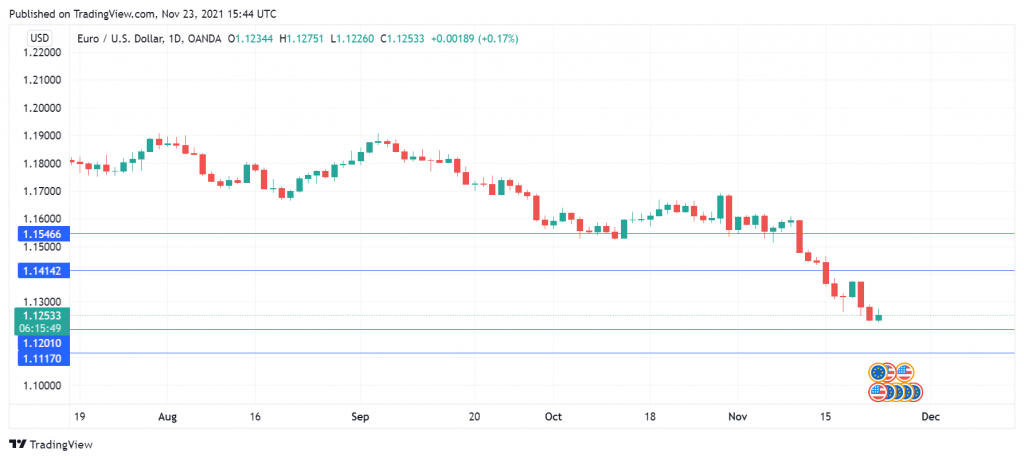The euro stabilized on Tuesday, after two days of losses. Currently, EUR/USD is trading at 1.1249, up 0.14% on the day.
PMIs points to higher inflation
In Germany, the PMI reports for October painted a mixed picture. Business activity rose slightly, as Services PMI climbed from 52.4 to 53.4, marking a 2-month high. Manufacturing PMI dipped to 57.6, down from 57.8 points. Although this reading indicates strong expansion, there is cause for worry as it was the lowest level since January. Manufacturers continue to grapple with supply delays and material shortages, which have led to growing inflationary pressures for businesses. This holds true across the eurozone, where the manufacturing sector is seeing growth while at the same time is being hampered by shortages, such as chips for motor vehicles.
With both the services and manufacturing sectors recording higher costs, companies will have to pass on these costs to consumers, which means that consumer inflation will likely continue to rise in the coming months. This will put more pressure on the ECB to tighten policy. The central bank is expected to announce at the December meeting that the EUR 1.85 trillion PEPP will wind up in March 2022. Governor Christine Lagarde has said that the ECB will not raise rates prior to 2023, but many investors expect the ECB to bring forward this timeline, particularly if consumer inflation moves higher.
It is not only the markets that are nervous about inflation. ECB Executive Board member Isabel Schnabel said in an interview on Monday that “risks to inflation are skewed to the upside”. This assessment wasn’t earth-shattering, but a hawkish opinion from an ECB member is very unusual and therefore newsworthy. Following her comments, the markets factored in a 0.10% rate increase in December 2022.
The markets appear pleased with the renomination of Jerome Powell, which provides stability and consistency at the Fed. Powell is under pressure to accelerate its timeline of raising interest rates, and there is growing expectation that the Fed will raise rates in June 2022, after the central bank winds up the bond purchase program.
In Turkey, another rate cut, despite high inflation, triggered sharp losses for the Turkish lire against the US dollar and the euro. With the country’s monetary policy flying in the face of traditional economic theory, the lira could be headed for further gusty tailwinds.
.
EUR/USD Technical
- There is support at 1.1201, which has held since July. This is followed by support at 1.1118
- There is resistance at 1.1415. Above, there is resistance at 1.1546
Content is for general information purposes only. It is not investment advice or a solution to buy or sell securities. Opinions are the authors; not necessarily that of OANDA Business Information & Services, Inc. or any of its affiliates, subsidiaries, officers or directors. If you would like to reproduce or redistribute any of the content found on MarketPulse, an award winning forex, commodities and global indices analysis and news site service produced by OANDA Business Information & Services, Inc., please access the RSS feed or contact us at info@marketpulse.com. Visit https://www.marketpulse.com/ to find out more about the beat of the global markets. © 2023 OANDA Business Information & Services Inc.



